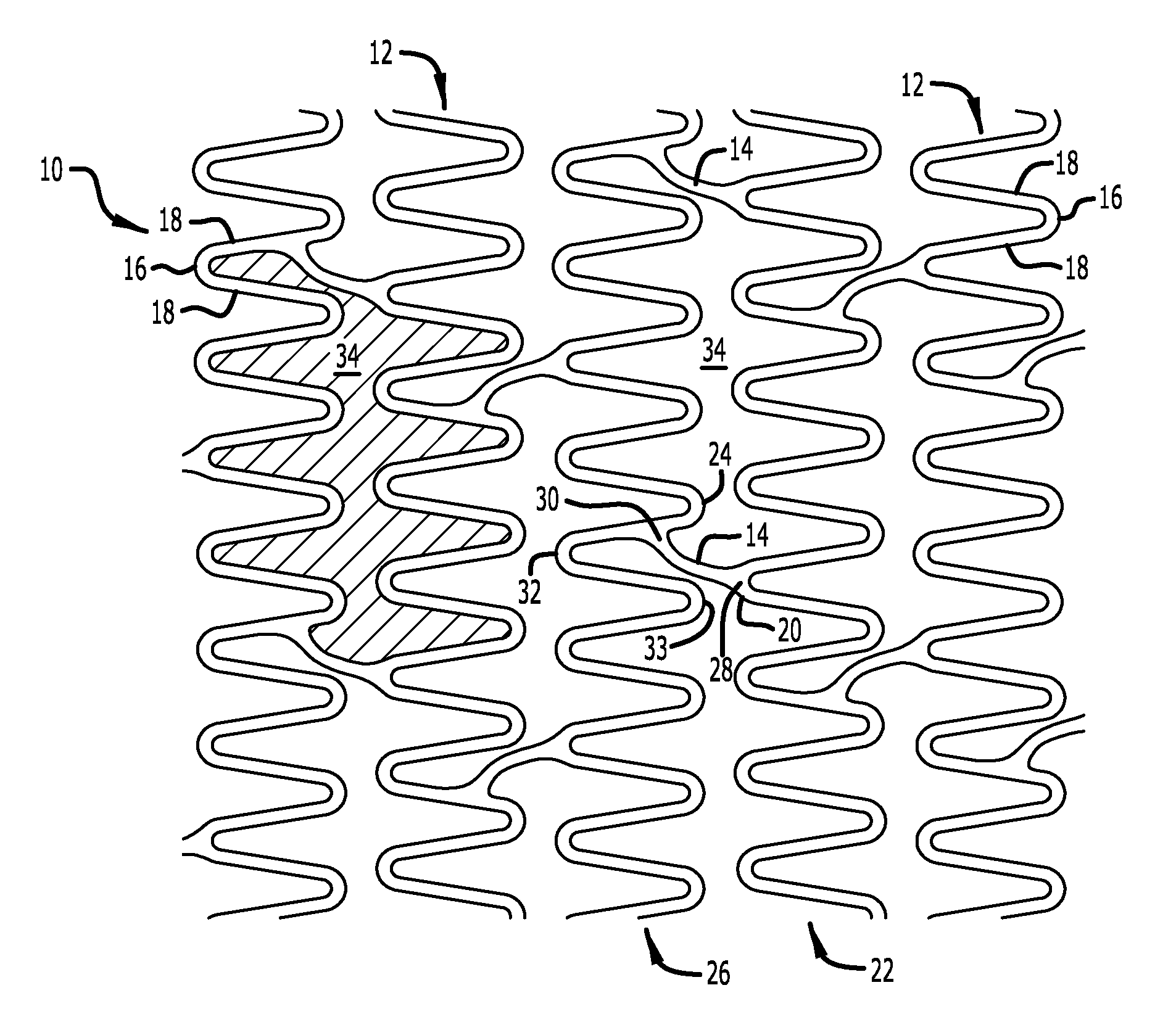Offset peak-to-peak stent pattern
a peak-to-peak stent and offset technology, applied in the field of intravascular stents, to achieve the effect of low profile, high flexibility, and prevent relative movemen
- Summary
- Abstract
- Description
- Claims
- Application Information
AI Technical Summary
Benefits of technology
Problems solved by technology
Method used
Image
Examples
Embodiment Construction
[0060]A novel stent platform is presented to facilitate improved resistance to longitudinal compression when compared to conventional two-link offset peak-to-peak stent patterns. Longitudinal compression has emerged in the literature and in technical research as a stent attribute which portrays the stability of an implanted stent structure under longitudinal compressive loads. These loads may be imparted on an implanted stent by guide catheter impact (ostial lesions), device pullback (IVUS, etc.), or when crossing an implanted stent with another stent. It has been shown that insufficient resistance to longitudinal compression may relate to excessive stent shortening after implantation, which has potential undesired implications for drug eluting stent (DES) safety and efficacy.
[0061]Referring to FIGS. 10-24, the various embodiments of the stents disclosed herein have some common structural features. Typically, the stent 10 includes a plurality of cylindrical rings 12 that are interco...
PUM
 Login to View More
Login to View More Abstract
Description
Claims
Application Information
 Login to View More
Login to View More - R&D
- Intellectual Property
- Life Sciences
- Materials
- Tech Scout
- Unparalleled Data Quality
- Higher Quality Content
- 60% Fewer Hallucinations
Browse by: Latest US Patents, China's latest patents, Technical Efficacy Thesaurus, Application Domain, Technology Topic, Popular Technical Reports.
© 2025 PatSnap. All rights reserved.Legal|Privacy policy|Modern Slavery Act Transparency Statement|Sitemap|About US| Contact US: help@patsnap.com



